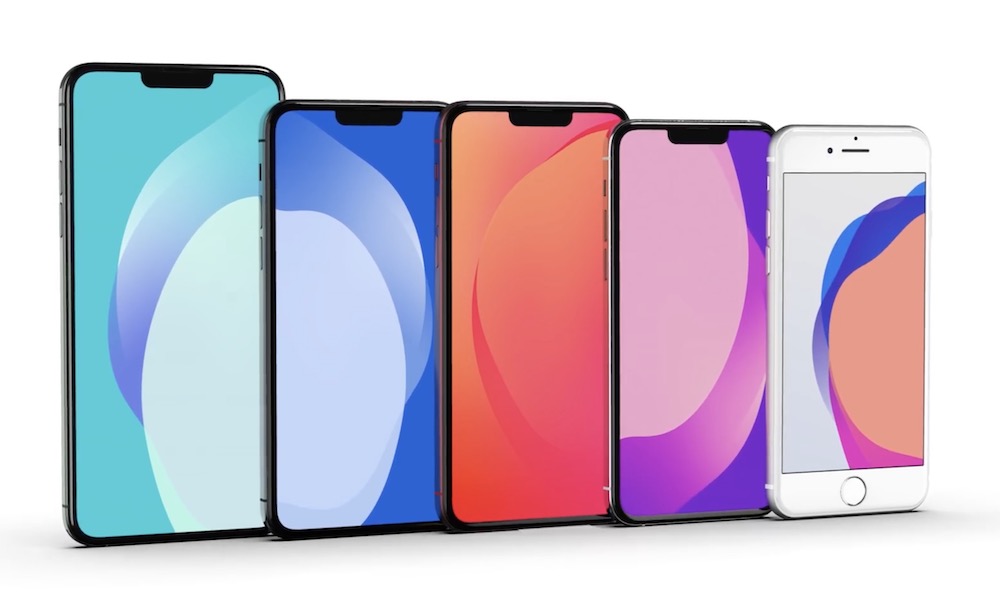Apple Might Delay the Ultra-Fast mmWave 5G iPhone until 2021
 Credit: EverythingApplePro
Credit: EverythingAppleProToggle Dark Mode
Although it’s common knowledge by now that this will be the year of the 5G iPhone, it looks like Apple’s plans to enter the 5G fast-lane may actually be a bit more complicated than we’d originally expected.
While reliable analysts have already weighed in on this year’s 5G iPhones, there hasn’t been a lot of solid information yet on what we can expect in terms of exact specifications of the 5G technology that will be used. We do know that Apple is planning to use Qualcomm’s best 5G chips, which offer maximum throughput, but there’s more to implementing 5G than just modem chip itself.
There are two main 5G technologies presently being deployed by carriers: sub-6GHz and mmWave, and both of these have unique requirements in terms of things like antenna configurations, since they operate on different frequencies.
Further, while sub-6GHz offers the best range and building penetration of the two by far, mmWave is significantly faster, offering speeds of over 1 Gbps, and theoretical maximums of up to 10 Gbps.
Supply chain reports collected by analyst Ming-Chi Kuo, who has a pretty solid track record when it comes to this kind of thing, suggested that all four of the OLED iPhones to be released this year would include mmWave 5G support in major markets such as the U.S., Canada, Japan, Korea, and the U.K.. However, Kuo did suggest that Apple could be producing separate iPhone variations, with some supporting only sub-6GHz 5G while others would support both the sub-6GHz and mmWave standards.
According to StreetInsider, however, analyst Mehdi Hosseini of Susquehanna has revealed that Apple could actually be launching the two versions of the 5G iPhone separately, with the latter possibly not arriving until early 2021. Hosseini predicts that the normal September iPhone lineup would include only the sub-6GHz models, while the mmWave version would be delayed as a result of Apple developing its own “Antenna-in-Package” (AiP) modules for the mmWave iPhones, rather than sourcing them from third-party suppliers.
Why This Doesn’t Matter That Much
While many other smartphone makers have been racing to have 5G technology in their devices just to check off a box on a spec sheet, the reality is that there’s little point in producing smartphones for networks that aren’t ready to handle them. This is why Apple hasn’t been in a hurry to release a 5G iPhone, and why it can still afford to bide its time even when it comes to mmWave technology.
Of the two major 5G technologies, sub-6GHz has significantly better range and coverage, which means that this is the one that carriers are actually actively rolling out. T-Mobile has launched its nationwide 5G network based entirely on the 600 MHz spectrum, with not a single mmWave transceiver in sight as of yet, while AT&T only has pockets of mmWave available to businesses in the core of a few major cities.
In other words, as of today mmWave coverage is virtually non-existent in the U.S., and while carriers are still expanding their 5G coverage, it’s unlikely that it’s going to be much more widely deployed by the time Apple releases its first 5G iPhone later this year. Due to the extremely short range of mmWave, it’s also likely that users outside of major urban centres will never see it at all.
In fact, with some analysts already predicting that slow carrier 5G rollouts may hamper iPhone sales, it’s easy to see why Apple isn’t in a hurry to produce a faster iPhone that almost nobody is going to be able to take advantage of anyway.
Then there’s also the question of how fast you need your iPhone to actually be. While offering transfer speeds in excess of 1 Gbps looks great on paper, very few users need to move data at those kinds of speeds from a mobile device. To put this in perspective, even the very highest-quality 4K UHD Blu-ray movie, streamed in real-time — which would be beyond excessive for viewing on an iPhone — only requires 128 Mbps bandwidth. Apple’s own Apple TV+ offers the highest streaming bitrates we’ve ever seen, peaking at 41 mbps, but again that’s for a full 4K stream sent to an Apple TV over a home broadband connection.
So while mmWave 5G iPhones are certainly coming, the real goal of these will be to provide the best possible coverage and signal strength as carriers deploy varying 5G technologies. For now, however, we suspect sub-6GHz 5G is going to be more than adequate for almost all 5G iPhone users, and we’d be surprised if most users will even notice the difference between sub-6Hz and mmWave in practical terms.
[The information provided in this article has NOT been confirmed by Apple and may be speculation. Provided details may not be factual. Take all rumors, tech or otherwise, with a grain of salt.]






